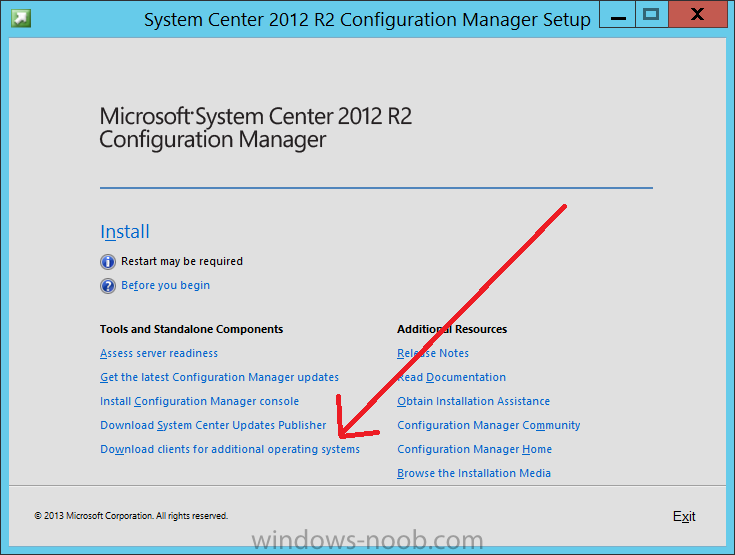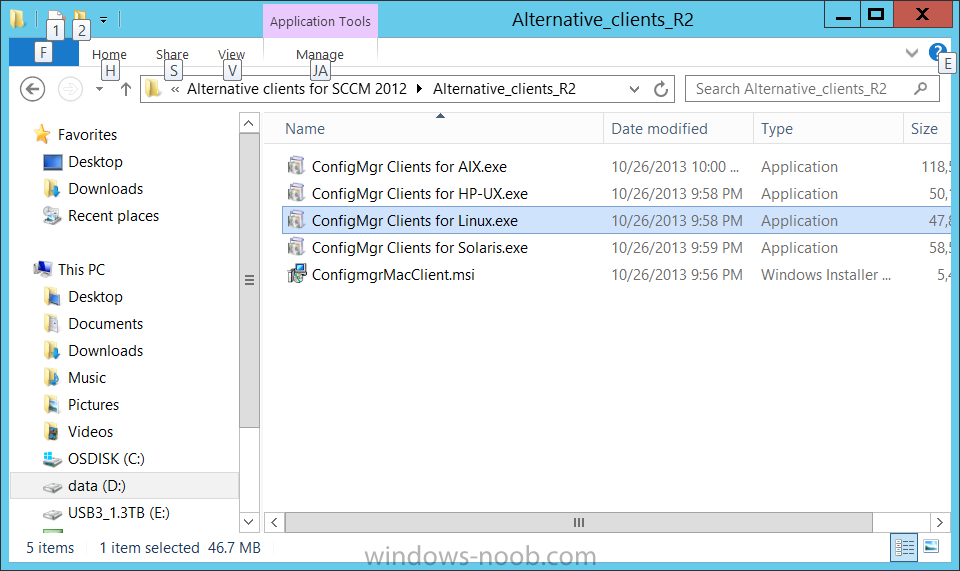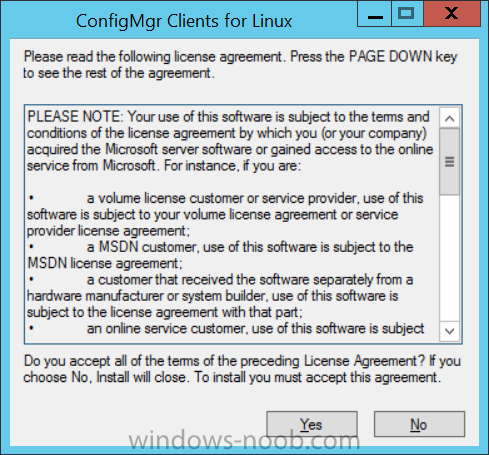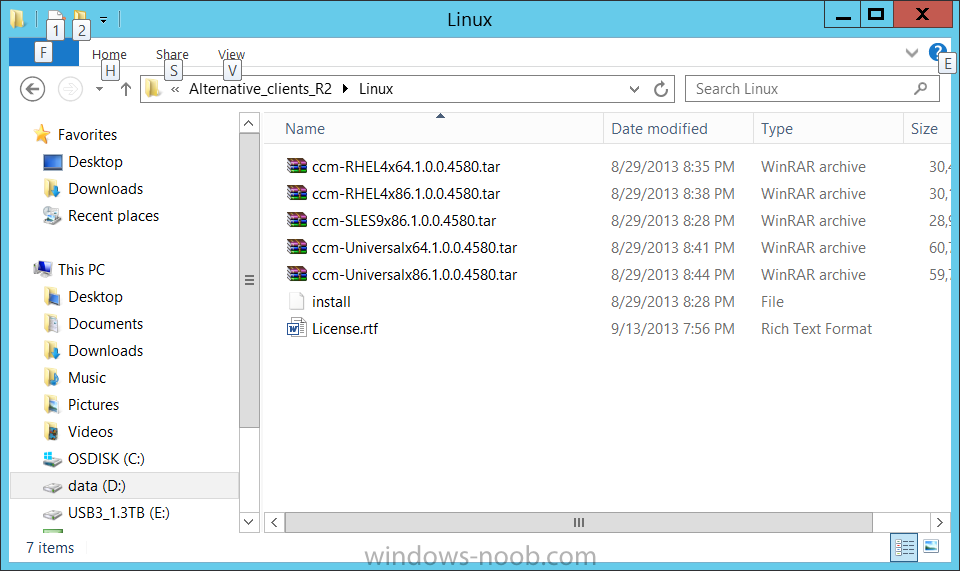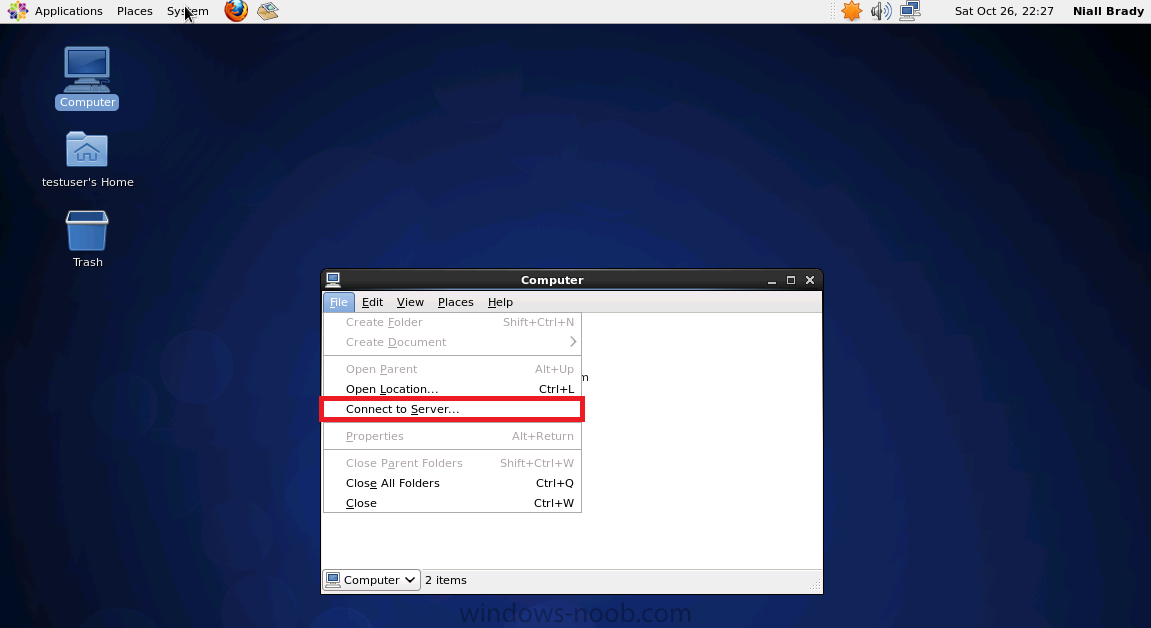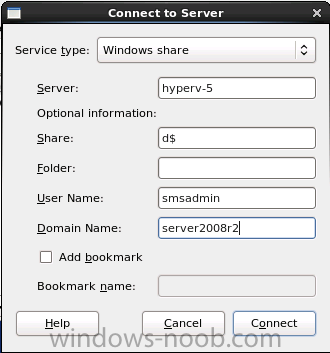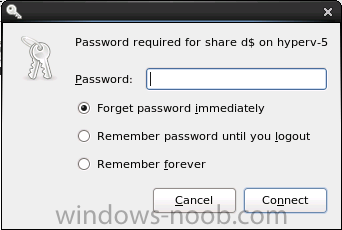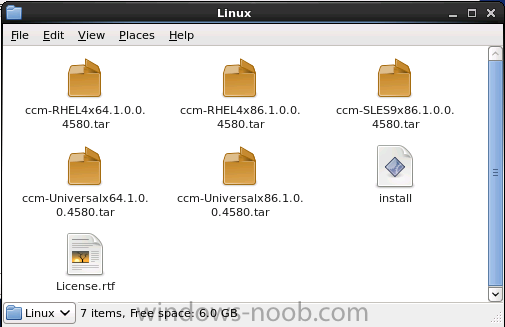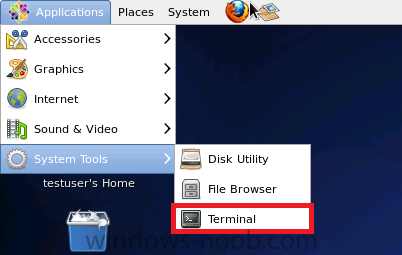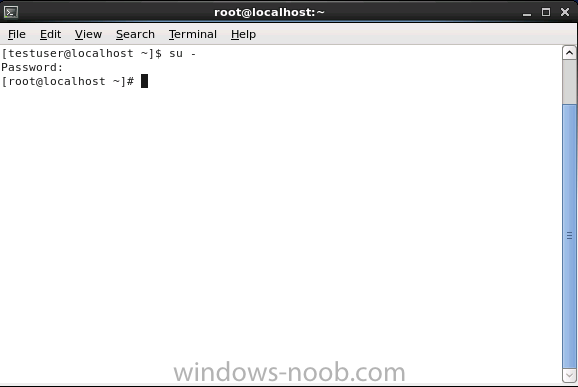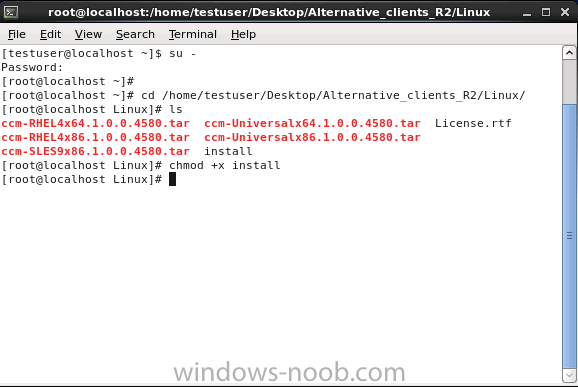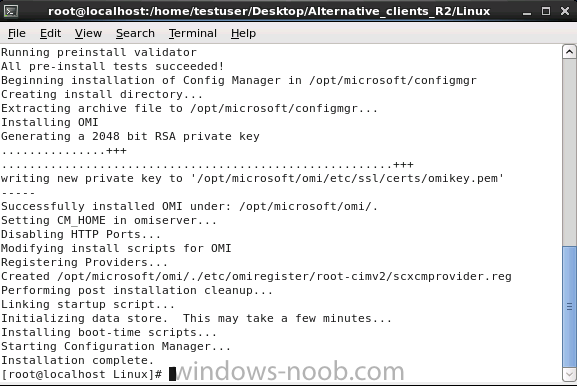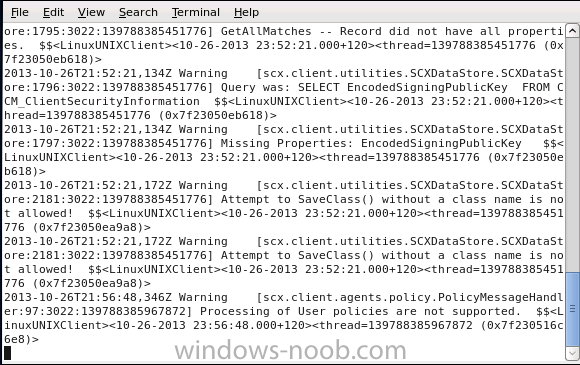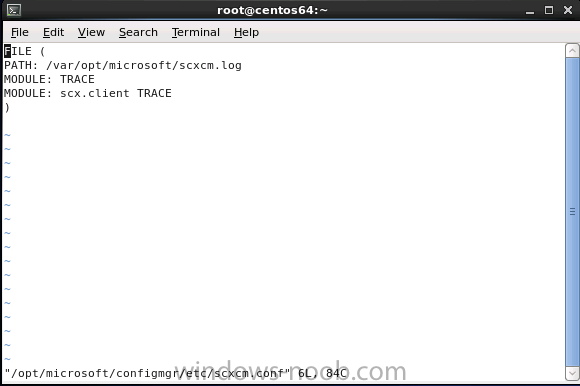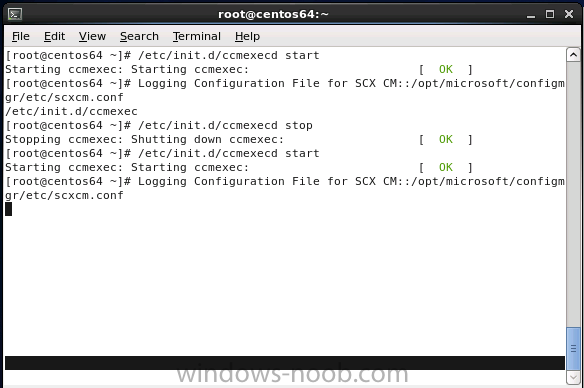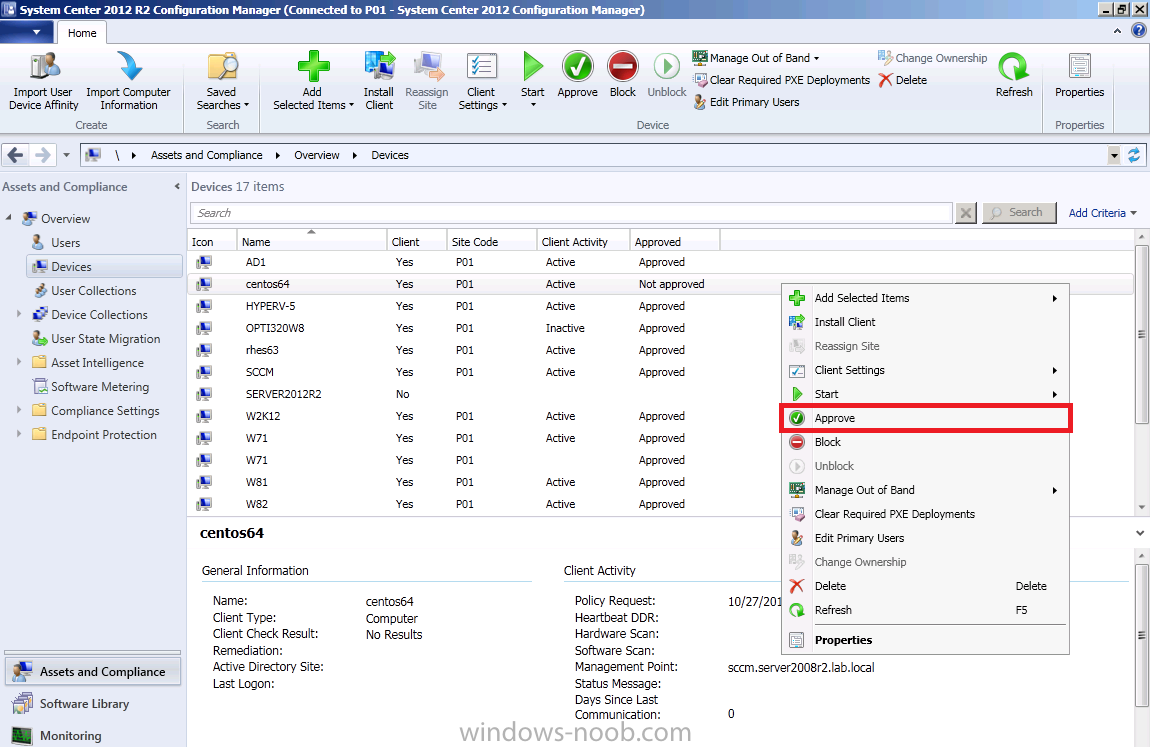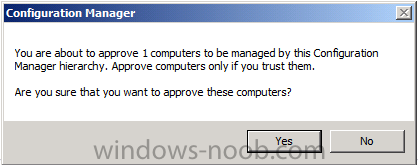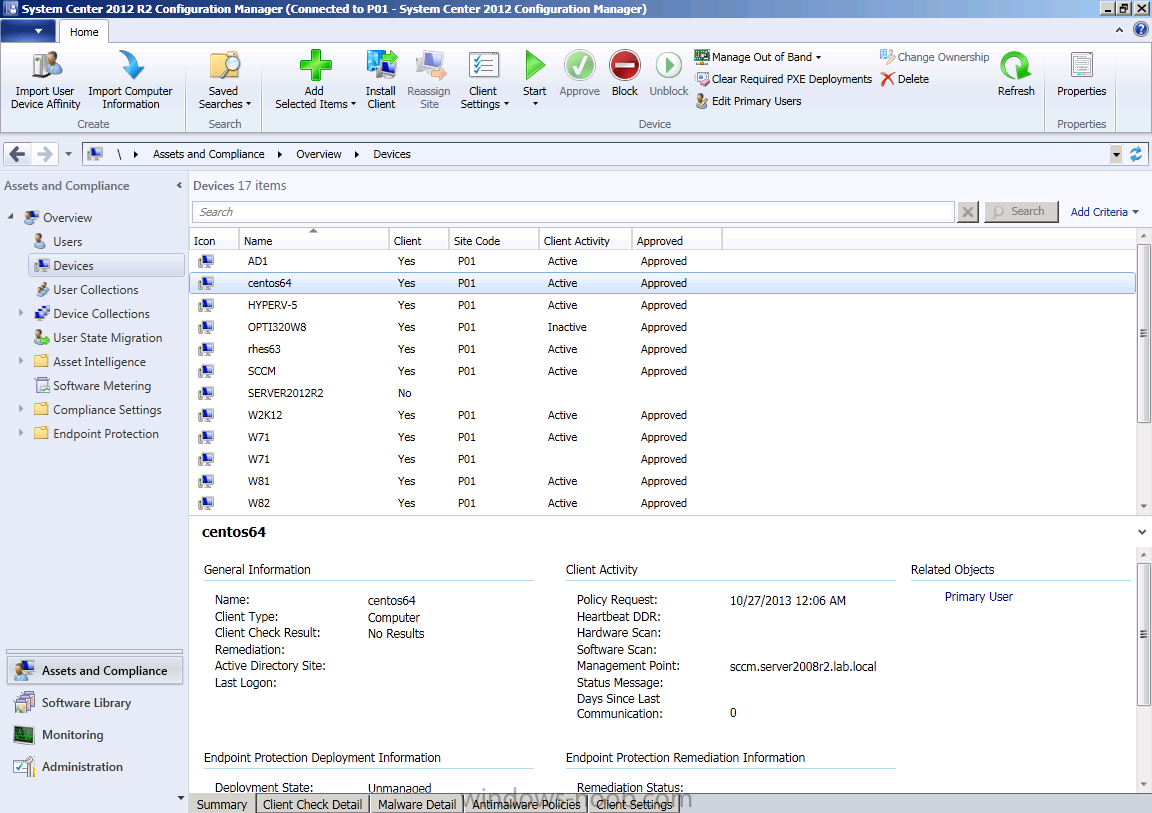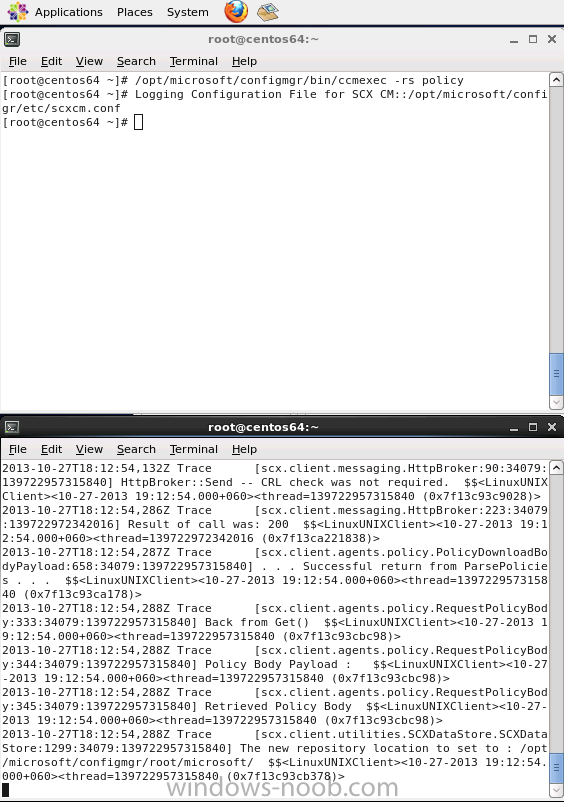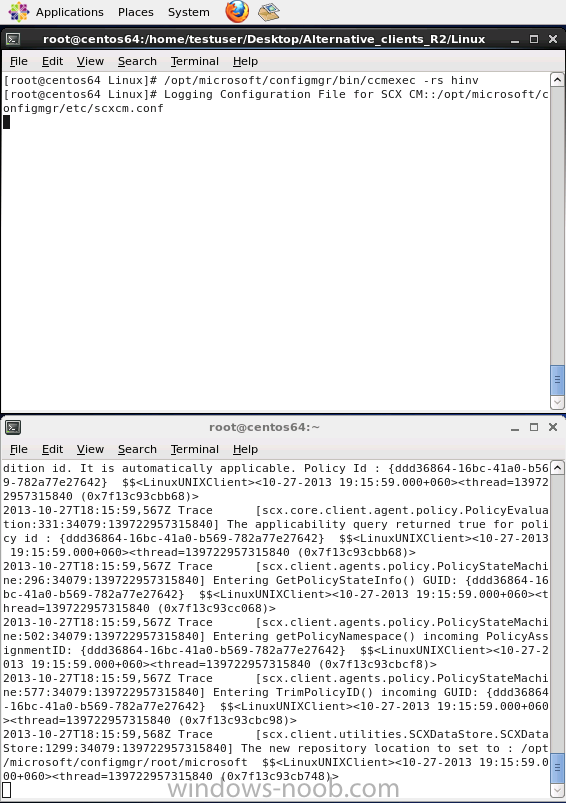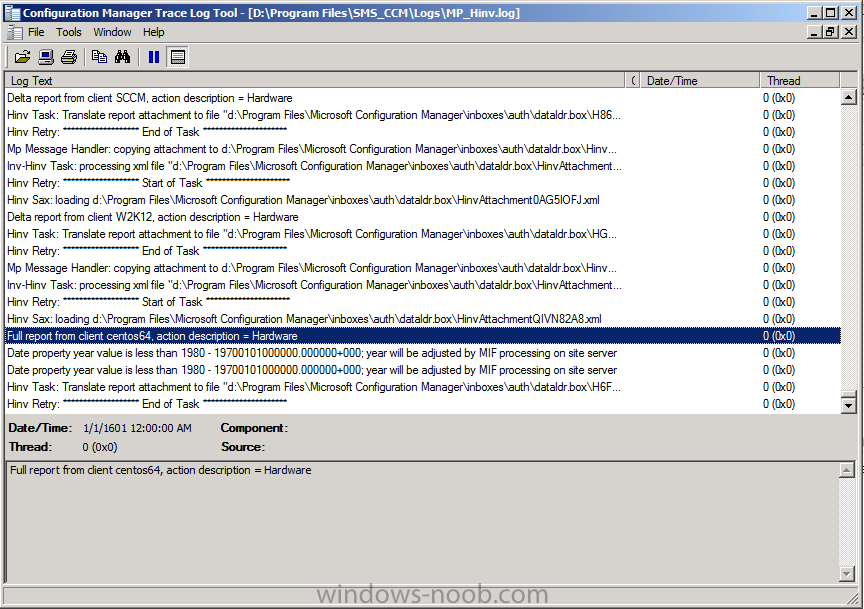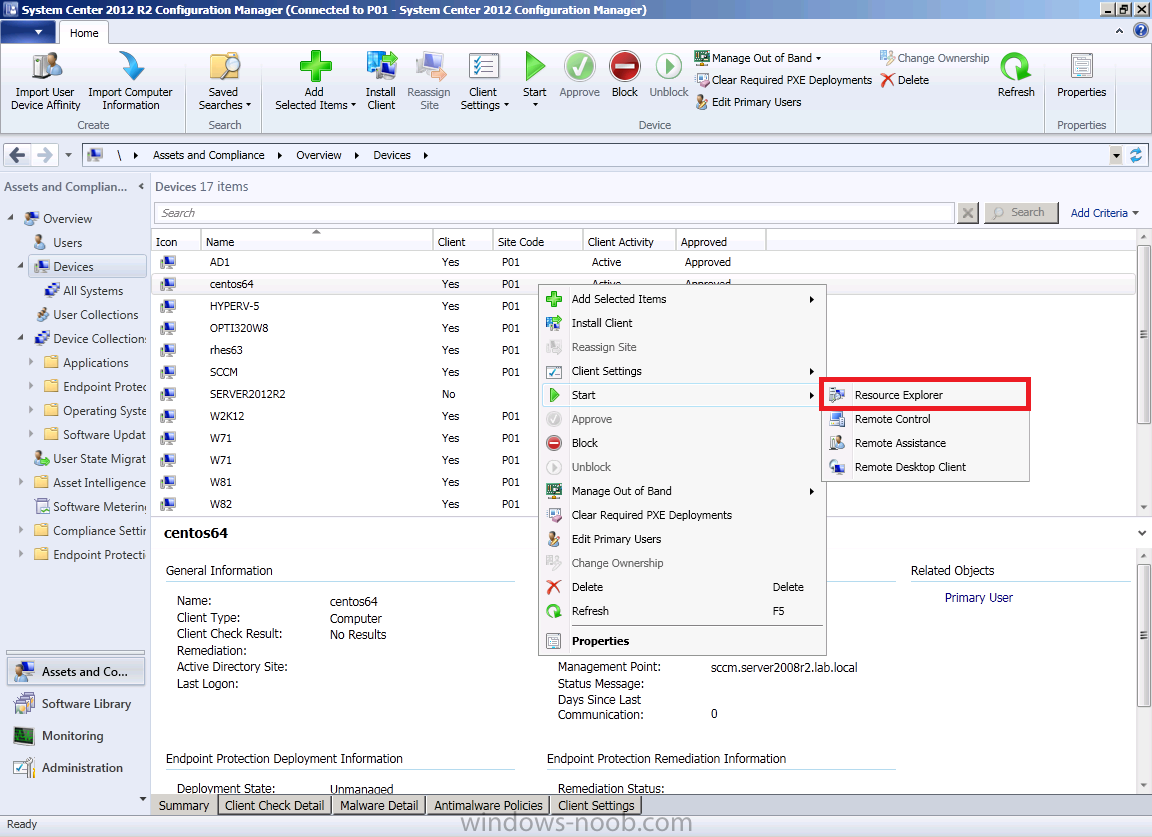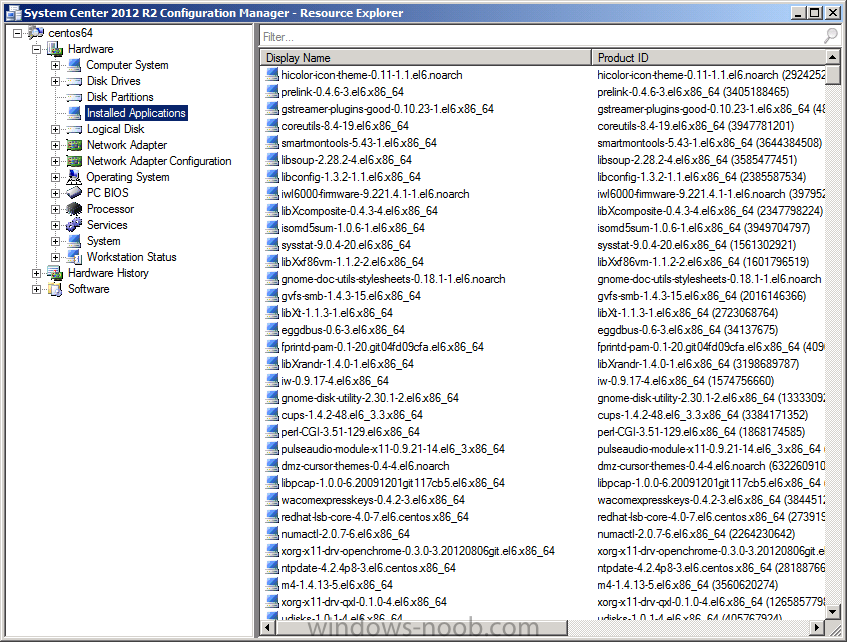Introduction
System Center 2012 R2 Configuration Manager supports a wide variety of operating systems including alternative operating systems such as the following:-
Mac Client:
- Mac OS X 10.6 (Snow Leopard)
- Mac OS X 10.7 (Lion)
- Mac OS X 10.8 (Mountain Lion)
UNIX/Linux Client:
- AIX Version 7.1, 6.1, 5.3
- Solaris Version 11, 10, 9
- HP-UX Version 11iv2 , 11iv3
- RHEL Version 6 , 5, 4
- SLES Version 11, 10, 9
- CentOS Version 6, 5
- Debian Version 6, 5
- Ubuntu Version 12.4 LTS, 10.4 LTS
- Oracle Linux 6, 5
In this post I will show you how to install the Linux client on a popular Linux operating system (Centos 6.4) and do some basic actions like hardware and software inventory in System Center 2012 R2 Configuration Manager. This guide assumes you have already installed your Linux server and are ready for the next step. If you have not installed it yet just download the Live CD from here and boot from it, choose the option to Install to hard drive once the os has booted to the desktop.
Step 1. Download the Alternative Client files
When you started the System Center 2012 R2 Configuration Manager installation you probably didn’t notice that there was a link to download alternative clients on the splash screen highlighted in the screenshot below
If you did click on the link it would bring you here
so go ahead and download those client files.
Step 2. Extract the Linux client files on a Windows computer
On the computer you downloaded the alternative client files, locate the Linux client exe file and extract the contents somewhere local by double clicking on the ConfigMgr Clients for Linux.exe file.
extract the files to somewhere useful.
the files are extracted..
Step 3. Copy the linux client files to your linux server
Logon as a testuser on the Centos server, click on the Computer icon, and click on File, then Connect to server
enter the details required to connect to a server that has the client files downloaded from Step 1 above and click on connect (notice I chose windows shares in the service type drop down menu) then click on Connect
you may be prompted for a password, enter it
Locate the extracted files and copy them to your desktop
Step 4. Install the Linux client
To install the client we need the right permission, and the permission needed is that of root. We will install the Linux client using the command line. Start a terminal by clicking on Applications, System tools and choosing Terminal.
become root (the Linux equivalent of Administrator) by typing
su -
This will prompt you for a password, enter the password for root.
change directory (cd) to the directory that holds the client installation files. Linux is case sensitive so keep that in mind.
make the installer executable by typing the following
chmod +x install
and then install the client using the following command (for an X64 server os, use the corresponding X86 file if it’s 32 bit). Change the management point FQDN and sitecode to match your infrastructure.
./install -mp sccm.server2008r2.lab.local-sitecode P01 ccm.Universalx64.1.0.0.4580.tar
After some moments you’ll see Installation Complete.
You can review what’s happening realtime via the log file using the following command
tail -F /var/opt/microsoft/scxcm.log
Step 5. Change logging options
Logging for the Linux based client is pretty much all done in one log file called scxcm.log contained in /var/opt/microsoft/. How that log file gets written to is governed by the following configuration file /opt/microsoft/configmgr/etc/scxcm.conf.
Below is what the conf file looks like by default:-
FILE (
PATH: /var/opt/microsoft/scxcm.log
MODULE: WARNING
MODULE: scx.client WARNING
)
using vi or your favorite text editor in Linux, change it so that it now reads as follows
FILE (
PATH: /var/opt/microsoft/scxcm.log
MODULE: TRACE
MODULE: scx.client TRACE
)
save the changes and stop and then start (or simply restart) the Linux client
To start the client:
/etc/init.d/ccmexecd start
To stop the client:
/etc/init.d/ccmexecd stop
Tip: The default logging mode for the scxcm.log file is WARNING which Indicates possible problems for the client operations. TRACE mode logs verbosely. As the log file is not trimmed in any way, when you are finished doing your diagnosis it is recommended to change it back to WARNING mode and restart the client daemon.
Step 6. Approve the Linux client
In the Configuration Manager console, locate the new linux client in Devices, and right click choose Approve.
answer yes when prompted
the client is now listed as Approved in the console
Step 7. Request a machine Policy
as root issue the following command
/opt/microsoft/configmgr/bin/ccmexec -rs policy
in the log file above you can see the word TRACE repeated over and over, this confirms that our change to the logging options were indeed processed and it’s now in Trace mode.
Step 8. Perform a hardware inventory
as root issue the following command
/opt/microsoft/configmgr/bin/ccmexec -rs hinv
on your Configuration Manager server, you can check the MP_HINV.log and look for the HINV details from our Centos computer coming in…
now’s a good time to start Resource Explorer in the console to see what info it has got
and here is what the installed applications look like
and that’s it, you’ve installed the Alternative client on our Centos server and performed a Hardware Inventory and got the information uploaded to your Primary server. You can even install RPM packages using Packages (and programs). I’ll deal with that in a separate post.
until then, adios
niall.
Related Reading
- How to Install Clients on Linux and UNIX Computers in Configuration Manager – http://technet.micro…y/jj573939.aspx
- Microsoft System Center 2012 R2 Configuration Manager – Clients for Additional Operating Systems – http://www.microsoft….aspx?id=39360#
- Hardware Inventory for Linux and UNIX in Configuration Manager – http://technet.micro…y/jj573945.aspx
- ConfigMgr 2012 SP1 and UNIX/Linux Clients – Part 1: Introduction and Client – http://blogs.technet…and-client.aspx
- ConfigMgr 2012 SP1 and UNIX/Linux Clients – Part 2: General Operations and Inventory – http://blogs.technet…-inventory.aspx
- Get help with Linux – http://www.linux-noob.com


